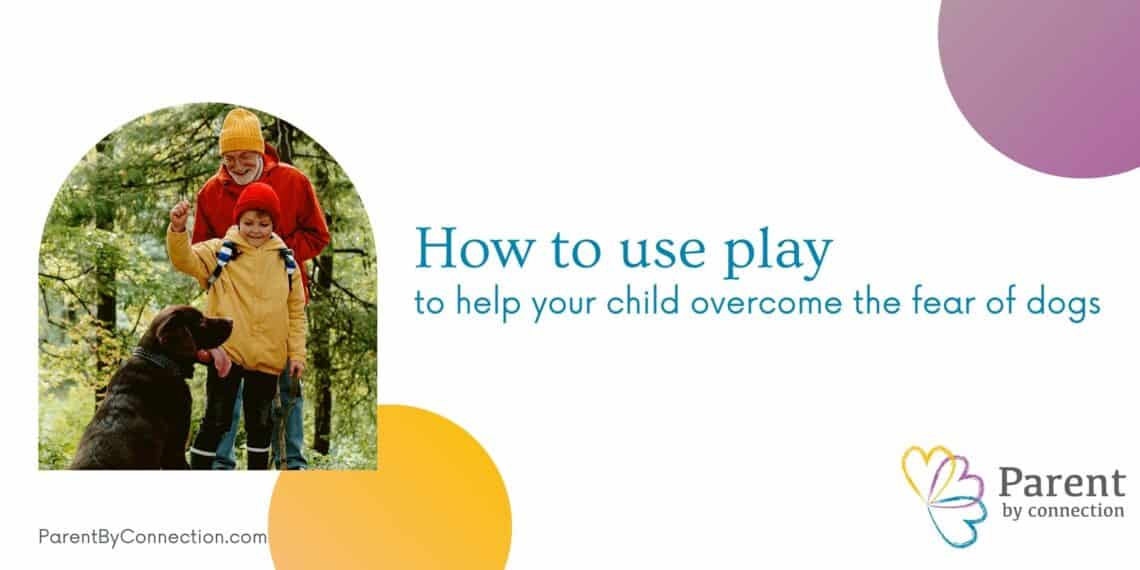
How to use play to help your child overcome the fear of dogs
Regardless of how cute and fluffy, friendly or playful, dogs can be, children can develop a fear of dogs that can hold them back from visiting friends or going to the park. And one thing you can do is use play to help your child overcome their fear of dogs.
Have you ever seen your child hiding behind your leg as a dog walks by? Or maybe you have noticed them becoming very alert when a dog is in sight. At times they’re just taking a step back as a puppy approaches, trying to keep their distance.
Maybe they’re avoiding or are reluctant about visiting a family member who is a dog owner. It might be that they desperately ask you to pick them up in your arms when you’re meeting a friend who has a dog.
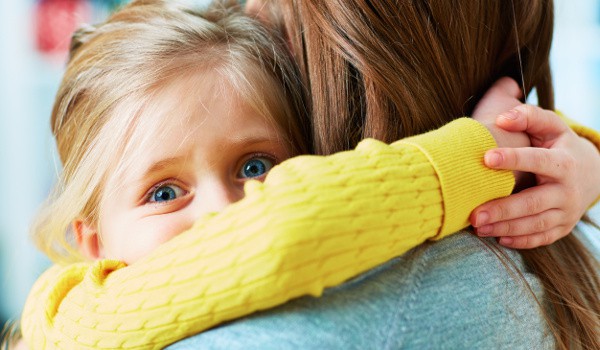
Or maybe you’ve seen your child overwhelmed with terror as a puppy makes its way towards them.
The fear of dogs is normal to be seen in children of all ages and it can manifest in different shapes and forms depending on its intensity.
Fear is a basic survival mechanism that signals our bodies to respond to danger with a fight-flight-freeze-fawn response.
All of the behaviours you might have noticed in your child are normal. They are meant to keep children safe when they feel a potential danger or threat. There’s nothing wrong with your child for doing all these things, and it’s not your fault that your child is afraid of dogs, you did nothing wrong.
The good news is, that you can support your child to overcome this fear.
Related article – How to support children overcome their fear of dogs
Why is my child afraid of dogs?
As parents we might be wondering and looking for answers, ‘Why is my child afraid of dogs?’. Or we might be thinking ‘I get it, they’re afraid of big dogs, but why are they so scared of grandma’s dog? That one is so cute, fluffy, and friendly!’.
Fear can get inside of us in so many unexpected ways.
Maybe a big dog barked once when they were really little. They got scared and they couldn’t make sense of what was going on. Their brain associated the image and sound of ‘dog’ with the feeling of ‘scared and unsafe’.
This is a natural process. One of our brain’s jobs is to keep us safe, so it will learn how to do so based on our experiences.
Or maybe one day, when they were two, they were exploring nature in the park, a few meters away from us. That’s when a really happy, joyful, small dog came running towards them. It playfully jumped on our child.
This ‘surprise’ was a bit too much for a young child. They got scared and, for whatever reason, they couldn’t release that fear out of their system. It got stuck inside and they are now afraid of dogs.
Or maybe the fear of dogs has nothing to do with this specific animal. Something else could have happened.
It could be that they heard a story about a ‘scary ferocious animal’. Or maybe while on a trip to the farm, a fluffy bunny accidentally bit their finger. That’s when their brain associated ‘fluffy four-legged animal’ with ‘pain and danger’.
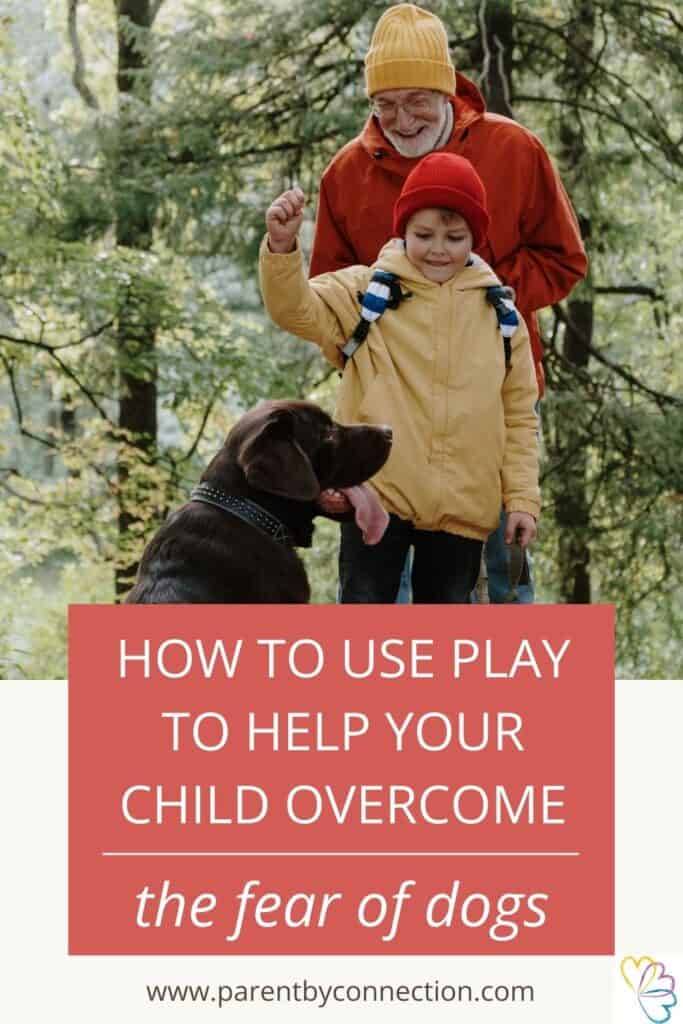
Yet we as parents don’t need to know where the fear comes from. The information might give us a helpful clue at times, but it’s not essential or important in order for us to support our children overcome their fear.
Some of the things you might have been told to do are to talk with your kid about dogs, read books about dogs, tell them all the reasons why they shouldn’t be afraid of grandma’s fluffy little dog, and explain to them how you would protect them against any possible harm a dog might cause.
And maybe you’ve already tried some of these suggestions and your child is still afraid of dogs. So I’d like to offer you another idea to try.
Fear is a human emotion that arises in response to a perceived threat. And in order to overcome the fear of dogs, children need to let the scary feelings out and recover emotionally.
So what your child needs from you is to support them to release the scary feelings that got stuck inside and become free of them.
And because of their fear, as I’m sure you’ve already noticed, children do avoid being around dogs, talking or thinking about them. This makes it harder to conquer the fear. So at times, you have to bring the subject of ‘dogs’ to them.
How do you use play to help a child who is a fear of dogs?
Luckily, children are able to recover from scary incidents that had instilled fears in them through play. So that is what you will try, to use play to help your child overcome their fear of dogs.
And because human beings let the scary feelings out and release the tensions through giggles and laughter, you can try to come up with a game that brings lots of giggles and laughter.
You might go to your kid and say ‘Hey, did you just turn into a dog?’ and pretend to be scared. You try to run away, but you stumble and fall! They start barking and chasing you. In order to make this ‘dog’ leave you alone, you might get a ball, ‘Get away from me, doggy, oh, here’s a ball, maybe this will divert this dog’s attention!’.
You throw the ball (maybe you ‘accidentally’ drop it on the floor), hoping to get rid of the dog. Yet here they are, still chasing you! ‘I can’t believe this, that didn’t work, I wonder what else I can do!’. And you keep playing this game for a while.
Or maybe one day your child says a word, like ‘apple’ or ‘chair’. You take this word and go like ‘Hey, who said the magic word and turned me into a dog? I did not plan on being a dog today! Please turn me back into a human being!’.
If they start to giggle, you are on the right track! They might either be the owner of the ‘dog’ and will give you orders. They might also pretend to turn you into human beings but actually, turn you into a rabbit, ‘Haha, mum/dad, I tricked you, you’re not a human being but a rabbit!’. You are ‘absolutely shocked’ and you beg again to be turned into mum/dad. Chances are, they might trick you again and turn you into an elephant, and so on.
Why do these playful ideas work to support children overcome their fear of dogs?
The idea is to pay attention to your child and notice what brings the laughter and do more of that and stop doing the things that don’t result in giggles. And you will try to do this through this role-reverse play: they’re the powerful competent fierce ones, and this time you are the ones that are scared.
You will want to make sure you really exaggerate being scared without making our kids feel mocked or humiliated. So you won’t imitate them, you will just take the general idea of being afraid and exaggerate it.
Playing and laughing in a safe environment on the topic of fear allows children to release the fear through giggles.
They can work on conquering the fear without being directly exposed to what caused the fear. And because when fear arose inside, it was accompanied by a feeling of helplessness, it’s beneficial for children to now feel powerful, strong, and in control.
Sometimes one playful session can be enough to lift a light fear. At other times though children need more playful sessions. So don’t feel like you’re doing anything wrong if, after one session of hearty laughs, your child is still afraid of dogs. It’s normal. Sometimes this emotional work just takes more time.
Can these games support all children who are afraid of dogs?
For children whose fear is bigger, this approach might be too direct. You can still use play to help your child to overcome their fear of dogs, but you might need to come up with other types of games. Your child still needs to be the powerful, strong, competent, brave one, and you are the clumsy, scared one.
Maybe they’re a dragon and you are a scared mouse. Or they are a lion roaring loudly and fiercely and we are a tiny old lady who just wants some peace: ‘Who’s making all this terrible noise, can’t I get any peace around this savanna?’, while acting all confused.
You can also simply ask them, ‘Hey, how about we play zoo/savanna/animals today?’ or ‘Let’s play something, I’ll be a mouse, what do you want to be?’ and see where this takes you.
Or you could use puppets or soft toys, and one toy is afraid of waffles for example. This way the child will get to play and laugh around fear without thinking or directly tackling the fear of dogs.
Follow your child’s lead, they will guide you. They want to be free of the scary feelings, and they know what they need in order to heal. You just show them you are there, you are available, and you are keeping them safe. You’ve got this!
Please note: ideas suggested here might be useful in case your child had a traumatic incident with a dog, but these are not enough to support a child to recover. We can talk more about your particular situation and I can support you in this case as well, so please feel free to get in touch with me.

The author of this page is Raluca Zagura, a Certified Hand in Hand Parenting Coach. You can read more about her here.


You May Also Like
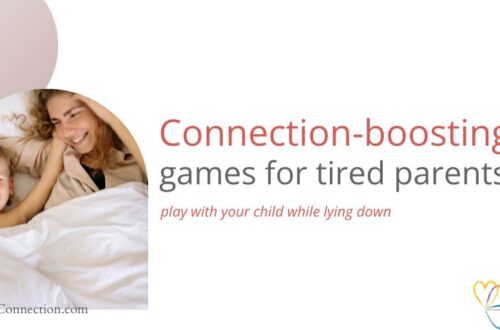
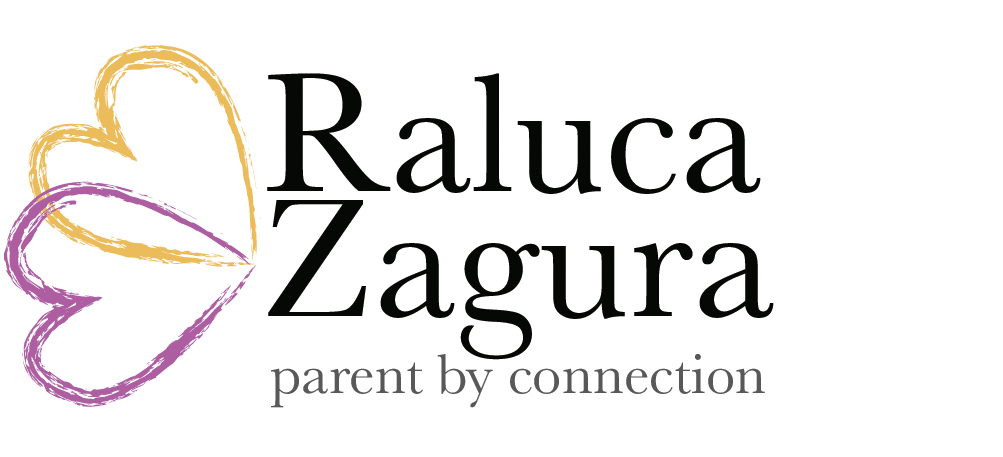
One Comment
Pingback: